Fiat Doblo Cargo Van Review 2025: Price, specs & load capacity
Written by Ivan Aistrop
Quick overview
Pros
- Good figures for payload and load volume
- Some handy practicality features available
- Electric version comfortable and easy to drive
Cons
- e-Doblo rather slow and has limited range
- Basic version is, well, basic
- Rivals are more rounded
Overall verdict on the Fiat Doblo
"The Fiat Doblo name has been around for more than 20 years now, but during that time, the mechanical nature of the van that’s worn it has changed quite a bit. These days, now that Fiat has been assimilated into the vast Stellantis Group, the Doblo is a small panel van that’s pretty much identical to the Citroen Berlingo, Peugeot Partner, and Vauxhall Combo. But is it any good? We’ll find out in this Fiat Doblo review."
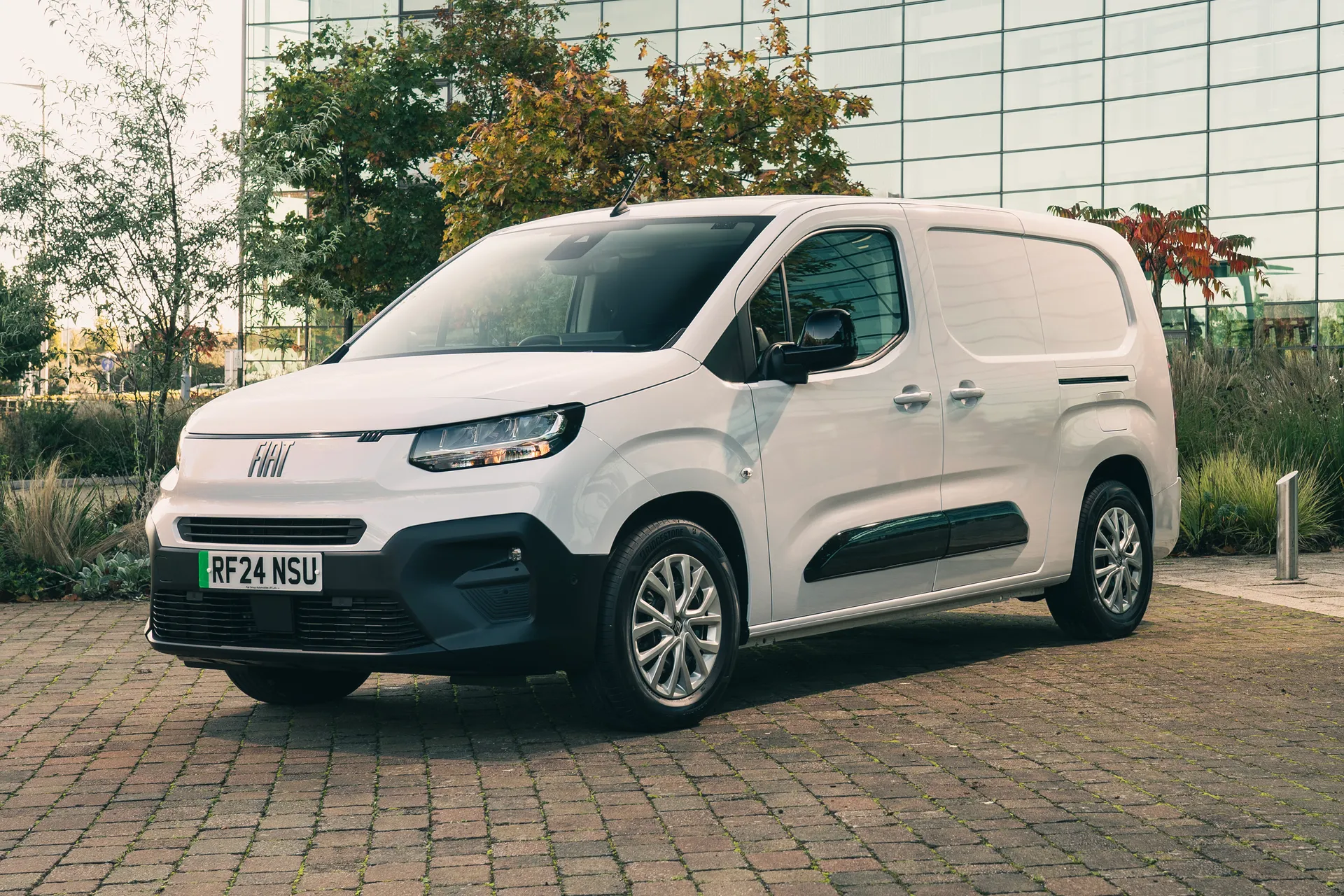
On paper, experienced van users will probably be quite impressed with the Doblo. Like its sister vans, it sits towards the upper end of the class for important figures like payload and load volume. This makes it among the more practical vehicles of its type, which obviously, is of critical importance for any van.
It also offers plenty of choice. You have the choice of two body lengths and two trim levels, and on the powertrain front, you can choose between two diesel engines and an all-electric version. There should be a Fiat Doblo to suit every business, then.
The driving experience is pretty much exactly what you’d expect in a vehicle of this type: comfort and ease are the primary goals, which it achieves with reasonable success, but the Doblo doesn’t feel too clumsy in the corners, either. The all-electric Fiat e-Doblo we’ve driven has modest performance and a fairly limited range, but it’s well-suited to pottering around the city if that’s where you conduct the majority of your business.
Much like most vans of this type, the Doblo’s interior is plasticky but undeniably hard-wearing, and while the standard equipment levels are rather sparse on entry-level models, pricier models do better. None of that is anything to complain about in the scheme of things, although we do think the Fiat’s pricing could be a little keener compared with rivals.
Looking for a used van for sale? We've got 100s of Fiat Approved Used Vans for Sale for you to choose from, including a wide range of Fiat Doblo vans for sale.
Is the Fiat Doblo right for you?
The Doblo does the job of a compact van as well as any of its myriad stablemates, primarily because it’s all but identical mechanically. It posts impressive figures for payload and loadspace, both being better than most non-Stellantis rivals. However, it’s not the cheapest offering compared with its sister vans and doesn’t come with any more standard kit.
What’s the best Fiat Doblo model/engine to choose?
If you’re considering a diesel, then the lower-powered 100PS version will probably suffice, because it has enough pace, and delivers good fuel economy. You’ll need to be prepared to change gear a lot to maintain your progress, though, so if that sounds like a pain, you might want to go for the more powerful diesel engine with the automatic gearbox. Alternatively, you could go for the electric e-Doblo version. This is a pleasant enough thing to drive and to live with and is thoroughly recommendable if your business suits an electric van. However, the limited driving range might rule it out for some users, while the payload figures aren’t as high as with the diesel Doblo, either.
What other vehicles are similar to the Fiat Doblo?
Well, there’s a handful of vehicles that are extremely similar to the Fiat Doblo, those being the Citroen Berlingo, the Peugeot Partner, and the Vauxhall Combo. As they’re all compact van offerings from the various members of the massive Stellantis stable of automotive brands, they’re all mechanically identical, and only really differ in terms of their styling, and a few pricing and spec differences. Even Toyota offers a version in the form of the Proace City van, and that company isn’t even part of Stellantis.
Other compact van offerings that aren’t related to the Doblo include the Renault Kangoo, Nissan Townstar, Mercedes Citan, Volkswagen Caddy Cargo, Ford Transit Connect, and Ford Transit Courier.
Comfort and design: Fiat Doblo interior
"All Doblos come with plenty of adjustment for the driving position: the steering wheel moves up and down, and in and out, while the driver's seat has a plentiful amount of height adjustment. This makes it easy to find a comfortable position in which to while away the miles."
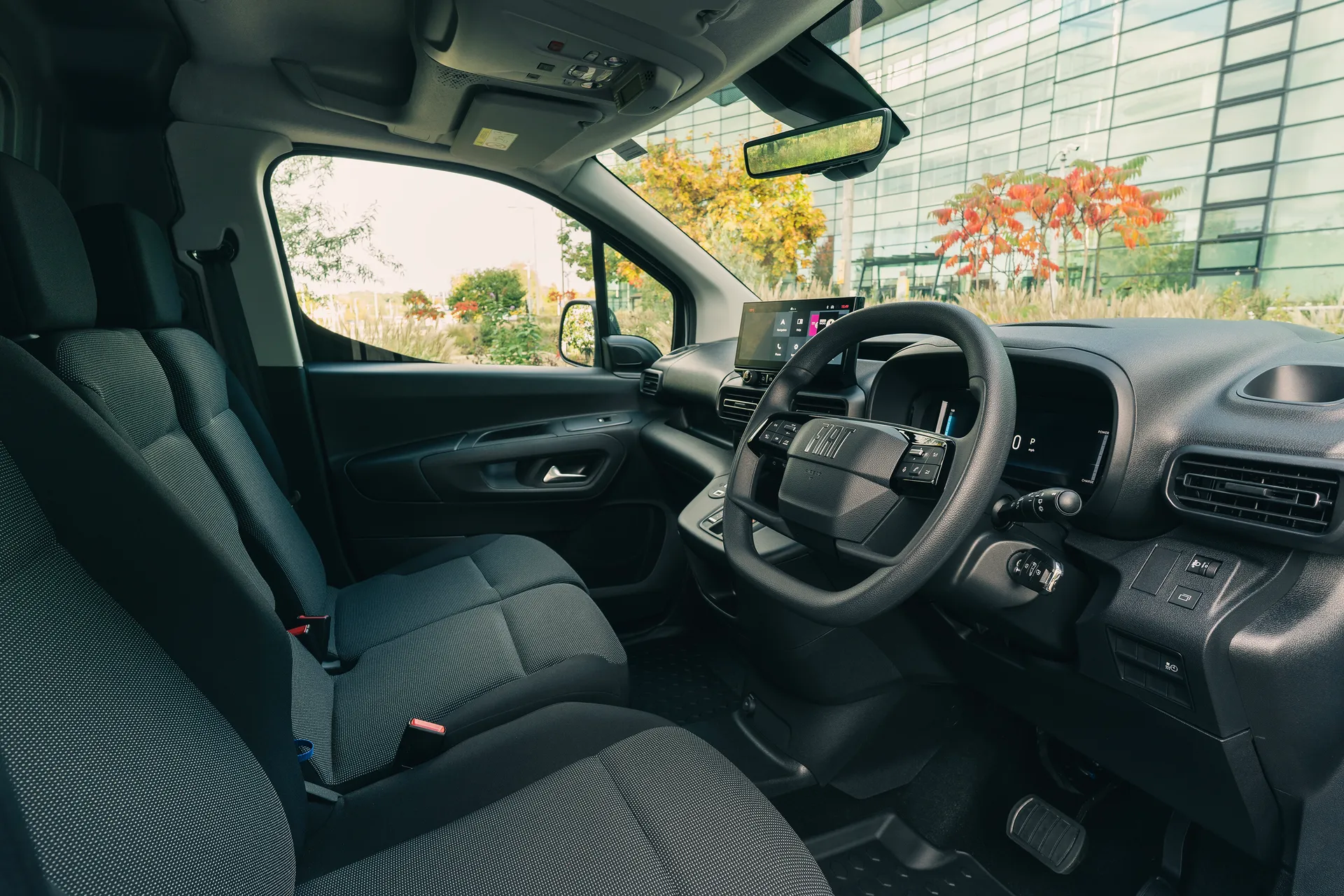
If you’re more used to brand-new passenger cars than commercial vehicles, you might feel like the Doblo’s cabin is a little over-simplified. The touchscreen infotainment system in the range-topping Primo version only provides a very basic level of functionality, while the basic Doblo doesn’t have a touchscreen at all, and many functions are controlled by buttons and knobs on the dashboard.
However, while tech-heads might not like that, everyone else will be jumping for joy: physical buttons and knobs are much easier and less distracting to use on the move than a touchscreen interface, and all the controls are clearly marked and easy to find. Sometimes, it really is better to keep things simple.
Your visibility at the front quarters of the vehicle is fine, but you don’t get much in the way of visibility at the back in basic models due to the bulkhead behind you. The door mirrors aren’t very big, either, which further limits your view behind. At least rear parking sensors are standard.
Primo models, meanwhile, come with a digital rearview mirror that displays a live feed from a rear-facing camera (it takes some getting used to because it makes your depth perception feel all screwy), along with reversing cameras at the back and sides of the vehicle.
Quality and finish
Most commercial vehicles are designed and built for durability and versatility, rather than tactility. And that’s certainly the case with the Doblo. Most of the interior surfaces you encounter are fashioned from thick slabs of hard grey plastic, meaning that while they’re not much of a treat for the eyes or the fingertips, they do feel extremely solid and hard-wearing.
Regardless of the trim level you choose, diesel models get a plastic floor lining in the cabin, while electric models are carpeted. We’re not entirely sure why.
Infotainment: Touchscreen, USB, nav and stereo in the Fiat Doblo
If you go for the basic Doblo trim level, then you get something called a Smartphone Station as a no-cost option. This is essentially a mounting cradle for your smartphone on the dashboard, with Bluetooth and two speakers. You also get audio controls on the steering wheel.
You can add DAB radio as a no-cost option, but it’s important to note that it isn’t standard equipment: Fiat’s brochure makes the point that you need to remember to specify this option when you order, and won’t be charged for it. Forget to specify it, and you’ll do without.
The Primo version does a bit better in the infotainment stakes, with a 10.0-inch touchscreen with navigation, DAB, two extra tweeter speakers, and Apple CarPlay/Android Auto smartphone mirroring. It’s far from the most sophisticated system you’ll encounter, but on the flipside of that, its simplicity makes it much easier to find your way around than many systems. There are a few quirks, such as some ambiguously designed on-screen icons, but you get used to these fairly quickly.
Primo versions also have a 10-inch digital instrument cluster in place of the basic version’s instrument dials. It looks good, it’s easy to read and there are a variety of different layouts to choose from. However, most of the layouts present most of the same information, just in slightly different ways.
Space and practicality: Fiat Doblo cargo space
The Fiat Doblo is available in two lengths, depending on your needs. The standard L1 version is around 4.4 metres long, while the L2 version is 350mm longer, 190mm of which sits in the wheelbase, and the rest in the rear overhang.
In both versions, the width of the load bay is identical at 1,229mm between wheel arches. The height of the load bay is 1,200mm in the L1 and 1,270mm in the L2. The load bay length, meanwhile, is 1,817mm in the L1 and 2,167mm in L2.
There’s a little more to the story, though. The range-topping Primo model comes with a load-through bulkhead as standard, while it’s optional in the regular Doblo (and not available at all in the Crew Van version). And in terms of maximum figures, it’s quite an important feature. It extends your maximum load length to 3,090mm in the L1 and 3,440mm in the L2. Perhaps more importantly, though, this fancy bulkhead also increases the maximum load capacity of your van: from 3.3 cubic metres to 3.8 cubic metres in the L1, and from 3.9 cubic metres to 4.4 cubic metres in the L2.
As well as the single-cab models, which have two front seats in standard Doblo form and a third ‘jump seat’ in higher-spec Primo models (the cabin has just about enough width for three people to squeeze in, but you’ll probably be rubbing shoulders with your workmates), a Crew Cab version of the L2 is also offered with two seats up front and a further three-seat rear bench behind.
This obviously comes at the expense of some cargo space. The width between the wheel arches is the same, while the load height stands at 1,243mm. However, with the rear seats in place, the load length is just 1,450mm and the load volume is just 1.8 cubic metres. With the rear seats folded and the two-position bulkhead set to its forwardmost position, these figures increase to 2,000mm and 3.5 cubic metres, respectively.
In the case of the all-electric e-Doblo, those all-important payload figures stand at between 759kg and 781kg on the L1, and between 691kg to 709kg on the L2. The Crew Van’s figure stands at 642kg
The diesel versions can haul a little more: between 982kg and 984kg in the L1, and between 927kg and 953kg in the L2, with the Crew Van having a figure of 840kg. All examples have a Gross Vehicle Weight (GVW) of around 2.4 tonnes, give or take a maximum of 55kg.
All versions of the Doblo have twin doors on the back end that give easy access to the load bay. These can open to 180 degrees, for even easier access, if you unhook the stoppers. The L1 also has a sliding door on the left side of the van, while the L2 has sliding doors on both sides.
The Crew Van gets a plastic trim on the load floor, while the load bay is bare metal in the others, or a wooden floor covering is available as an option. We reckon it’s a bit mean, though, that no version of the Doblo gets illumination in the load area unless you pay extra.
Handling and ride quality: What is the Fiat Doblo like to drive?
"The biggest dynamic priority for those who spend hours of their working day at the wheel of their van is comfort: after all, you wouldn’t expect a panel van to relish being flung around corners, even when racing between jobs."
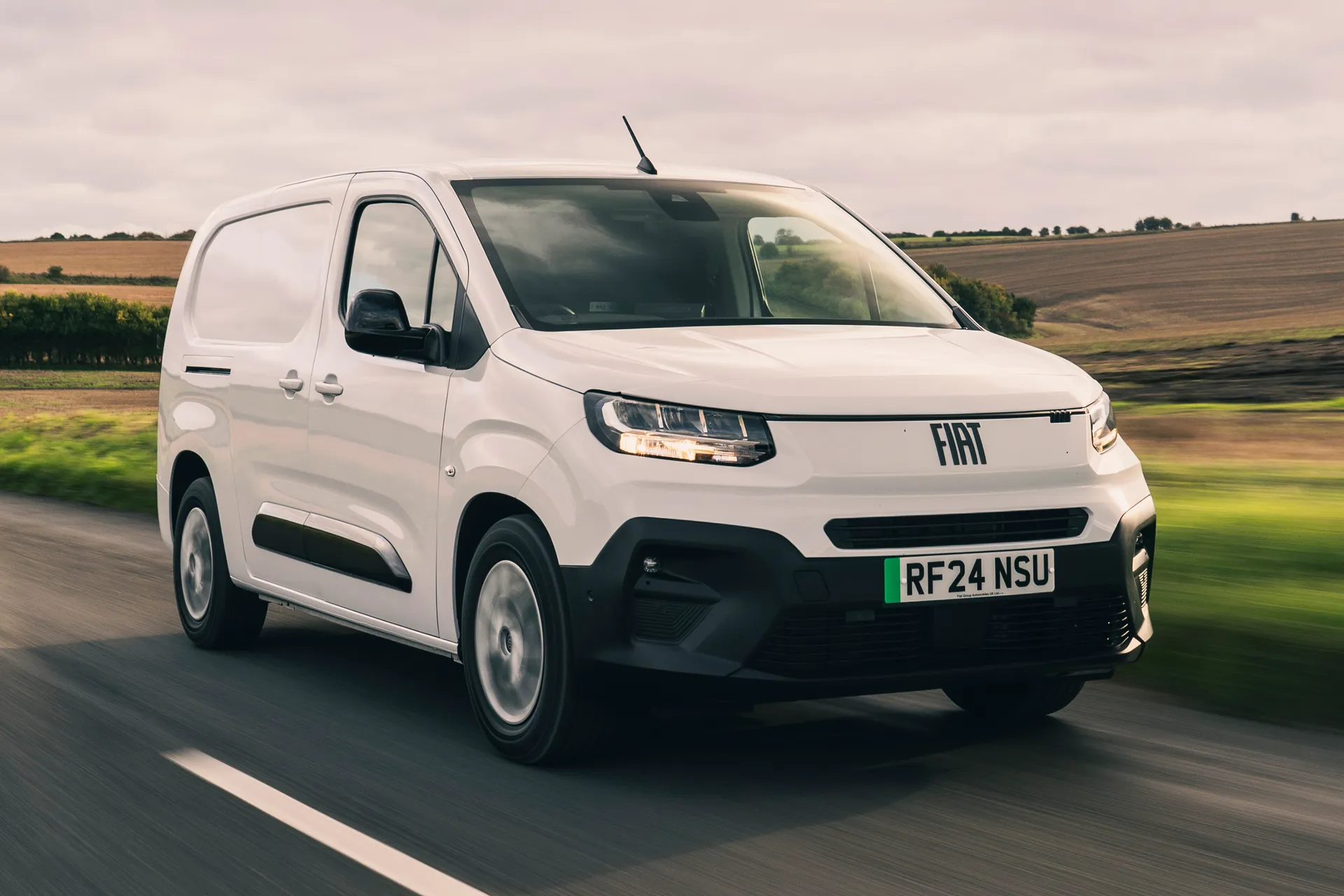
The driving experience is pretty much exactly what you’d expect in a vehicle of this type. The suspension is geared towards comfort rather than agility, even though the ride can still be a little jumpy when you have an empty load bay, but it quickly settles down with some weight on board, and it’s never uncomfortable.
While handling is not the priority with the Doblo, it feels reasonably stable and secure on all types of roads, while the light steering and tight turning circle help with around-town duties. Okay, so rivals like the Ford Transit Courier and VW Caddy Cargo do a slightly better job on both ride and handling, but you’ll have very little reason for complaint with the Doblo.
What engines and gearboxes/motors and batteries are available in the Fiat Doblo?
The Doblo is available in either diesel form or all-electric e-Doblo form, and we’ll start with the electric one. It has an electric motor driving the front wheels through a single-speed transmission, and it’s fed by a 50kWh battery pack. At its maximum, the motor develops 136PS and 270 Nm of torque, which makes it capable of a 0-62mph time of 11.7 seconds, and a top speed of 82mph.
Bear in mind, though, that this is the maximum you get. Select the vehicle’s Normal driving mode rather than the Sport mode, and the level of power and acceleration you get is restricted to preserve range. Select Eco mode, and your performance is restricted even more.
There’s a clearly appreciable difference between the modes. Eco mode is just about brisk enough to cope around town and with lower-speed work, but when you’re getting into 50mph territory or thereabouts, or you need more urge to exploit gaps in traffic, then you’ll need to swap Eco mode for one of the others.
Normal mode will be enough for most drivers in most situations. Your level of performance still feels decidedly leisurely, but that’s hardly a problem because you don’t tend to drive commercial vehicles like the Doblo like your hair’s on fire, anyway. That said, the Sport mode’s extra zip does come in handy when pulling away at a busy junction or joining a motorway, although again, you’ll hardly be rewriting the rules of physics with your acceleration.
You get paddles behind the steering wheel to alter the strength of your regenerative braking (this harvests energy that would otherwise be lost during deceleration, and feeds it back to the battery) in three stages. The lightest mode allows you to almost coast along, whereas the heaviest mode is almost strong enough (but probably not quite) to qualify as a one-pedal driving mode. All are easy to get used to.
Both of the two diesel variants use a 1.5-litre Multijet turbodiesel engine, badged as the 100 and the 130, although the actual power outputs are 102PS and 131PS, respectively. The former gets a six-speed manual while the latter gets an eight-speed automatic.
The entry-level choice is quick enough to get you going with a reasonable amount of purpose, so getting up to speed isn’t a problem, but maintaining your pace can be a little more difficult. Should the rev counter drop below 2,000rpm, the engine loses almost all of its urge, so if you hit an incline or get caught behind slower-moving traffic, you’ll need a downshift or two (or maybe three) to get back up to speed again. And that’s with nothing in the load bay: stick a few hundred kilos of cargo on board, and things will get exponentially worse.
The 130PS version with the automatic gearbox is a good bit more relaxed in everyday use. Ultimately, the engine doesn’t have a great deal more urge than the entry-level engine, so isn’t much faster, and it has that same low-rev flatness to its character. However, the automatic gearbox never lets the revs drop below that 2,000rpm threshold when you’re on the move, and although a vast number of gearchanges are needed to maintain or gain pace, at least they’re being done for you.
Fiat e-Doblo range: How far can you travel on a charge?
The all-electric e-Doblo has a rather modest 50kWh battery, which gives it an official WLTP range of 213 miles. As always, though, don’t bank on getting anywhere near that in real life. High-speed motorway runs will see your achievable range plummet very quickly, and so will cold weather. Even in optimal conditions, don’t bank on an average of much higher than 180 miles.
Refinement and noise levels
As you’d expect in the all-electric e-Doblo version, you hardly hear a peep out of the powertrain. That shortage of noise does make the wind and road noise you hear at moderate-to-high speeds all the more noticeable, but neither is loud enough to be troublesome. You occasionally hear the suspension clonking a little over bumps, plus the odd creak from the bodywork echoing through the load bay behind you, but again, it’s not at a level that’s abnormal for your average panel van.
Inevitably, the diesel engines make themselves heard a bit more than the electric motor, but most of the time, the noise stays distant and muted. The less powerful diesel sometimes has to be worked quite hard to maintain your progress, and it becomes a little more vocal as a result, but it seldom gets too loud.
Safety equipment: How safe is the Fiat Doblo?
The Doblo’s standard equipment list includes driver assistance features including lane keep assist, high beam assist, automatic emergency braking, intelligent speed limit assistance, and driver attention alert. Choosing the Primo trim level adds a pack that includes blind spot detection, as well as a whole bunch of extra parking assistance.
There is an option pack available that adds adaptive cruise control with stop and go, along with lane positioning assist, but it’s only available on electric or automatic versions, and only on the basic Doblo, not on the Primo or Crew Van for some reason.
All Doblos have driver and passenger airbags, side airbags and curtain airbags, to help protect occupants in a crash. In the Crew Van, however, airbags are found in the front seats only.
As we’ve said, the Doblo is mechanically identical to its sister vehicles from Citroen and Peugeot. The passenger-carrying versions of those vehicles were crash-tested by Euro NCAP in 2018, earning four out of five stars. The vehicles have been awarded the Gold standard in Euro NCAP’s commercial vehicle ratings, which are more about the fitment and effectiveness of driver assistance systems than they are about crash safety. The Gold standard is the second highest you can get behind Platinum, but in reality, those two standards have been achieved by almost every van that’s ever been assessed: there’s only ever been one Silver award as far as we can see.
MPG and fuel costs: What does a Fiat Doblo cost to run?
"Obviously, this varies greatly depending on whether you’re interested in the diesel-powered Doblo, or the all-electric version, both of which we’re considering here."
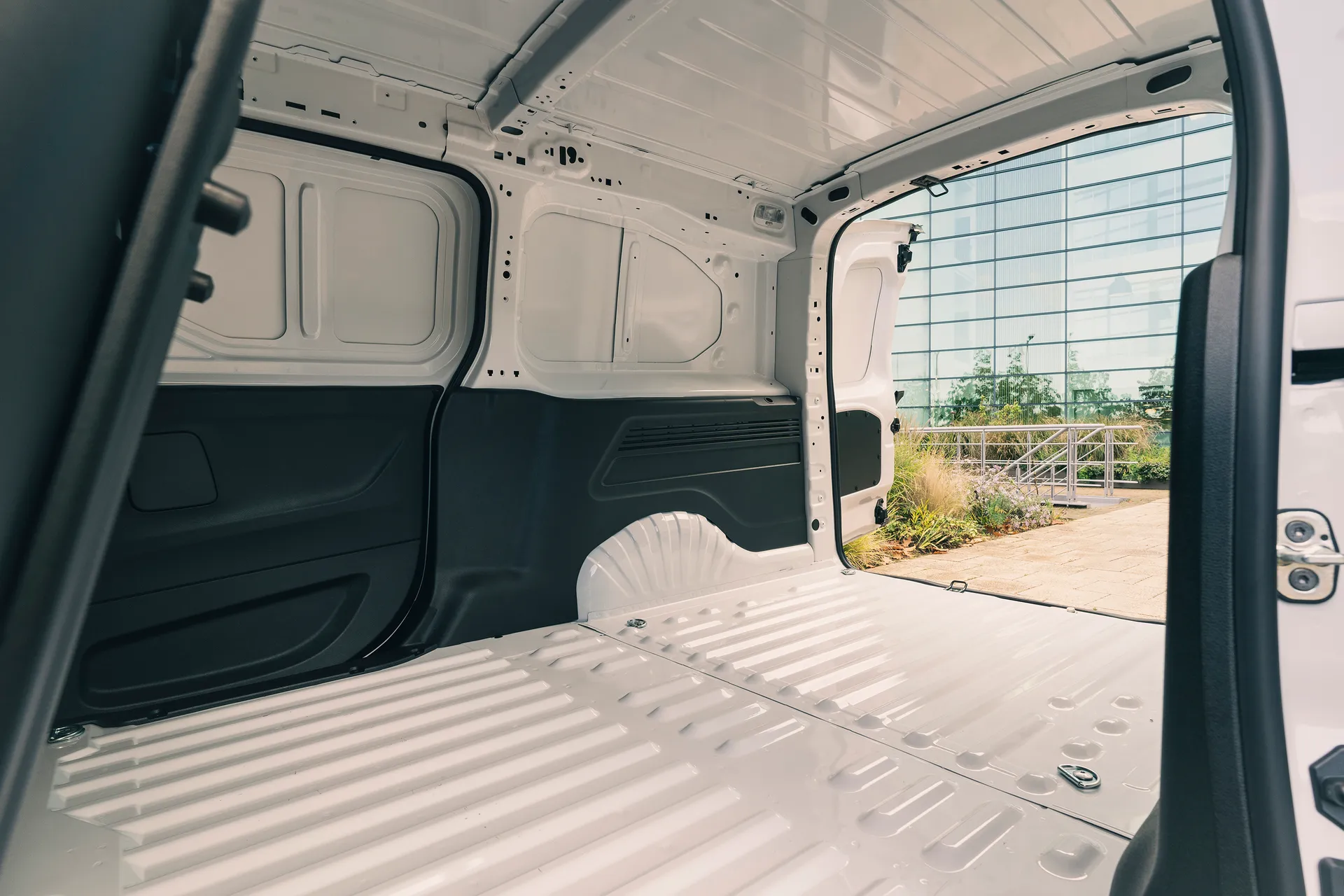
Choose a diesel-powered Doblo, and WLTP fuel consumption figures suggest you’ll get up to 54.4mpg from the 100, or up to 51.9mpg on the 130. These figures are always rather optimistic, though, and you probably won’t do as well as that in the real world. We reckon you can expect around 45mpg or upwards if you’re gentle, less if your van is loaded up with stuff.
Fiat Doblo charging times: How much does it cost to charge?
The e-Doblo has a total battery capacity of 50kWh, but only 47kWh of that is usable (all EV batteries have a few dormant cells to prolong battery life). So, if you’re doing as most owners will do and are charging at home or at work on a 7kW wallbox charger, a full juice-up will take around seven and a half hours. That charge will cost around £13 if you’re paying the national average rate for domestic electricity at your property.
The e-Doblo supports DC rapid charging at up to 100kW, which can take your battery from 0-80% in just 30 minutes if you can find a powerful enough charger. Just bear in mind that power from chargers like this is much, much more expensive (it varies, but three times the price of domestic power is a decent rule of thumb), so we’d only recommend using these chargers when you absolutely have to. Relying on them regularly will get very expensive.
Fiat Doblo reliability and warranty
Commercial vehicles aren’t considered in our go-to source of reliability data, the HonestJohn.co.uk Satisfaction Index: it’s only for passenger cars. However, it’s worth noting that Fiat was named the third-worst manufacturer in the entire study (out of 29 carmakers) for reliability. You could take solace from the fact that the Doblo is based on a revised version of the mid-size passenger car platform used by Peugeot and Citroen, but unfortunately, those brands finished second-worst and fifth-worst on the same list, respectively.
The Doblo comes with a three-year warranty (two years of manufacturer warranty, and a third year of retailer warranty), with a 100,000-mile limit.
The electric version has a battery warranty of eight years or 100,000 miles, during which time the battery will be repaired or replaced for free if it falls below 70% of its original capacity.
Still, it’s good news that servicing only needs to occur every two years or 25,000 miles on all Doblos, although on the Electric, you’ll need an initial inspection at one year/12,500 miles. That should minimise the downtime that your business will need to factor in to keep your vehicle running smoothly.
Fiat Doblo insurance groups and costs
There isn’t a huge amount to pick between the various versions of the Doblo when it comes to insurance groupings. Doblos with the 100PS diesel engine will sit in groups 28 or 29 depending on trim level, while those with the more powerful 130PS unit command a classification of either group 30 or 31. The all-electric e-Doblo, meanwhile, gets a grouping of either 29 or 30. As insurance groupings range from 1 to 50, with 1 being the cheapest and 50 being the most expensive, you can expect middling premiums on the Doblo.
VED car tax: What is the annual road tax on a Fiat Doblo?
Like all light goods vehicles (LCVs), the diesel-powered Doblo is liable for a flat rate of VED road tax for such vehicles, and this is currently charged at £335 per year. If you choose to pay in instalments by direct debit, the total cost will rise to £350 over the year, while if you choose to pay every six months rather than annually, then you’ll pay a total of £370. The moral of the story? Pay the single annual lump sum if you can.
The e-Doblo is currently exempt from VED being an electric vehicle, but this won’t remain the case for very long. As of April 2025, that exemption for EVs will be lifted, meaning you’ll be stung with the same tax bill as drivers of diesel Doblos.
Fiat Doblo price
"Prices for brand new examples of the Doblo start at around £22,000 for the 100 Multijet diesel in the L1 body style, with basic trim. You’ll add about £1,000 for the L2 body style, about £1,500 for the more powerful engine with its automatic gearbox, and around £2,000 for Primo trim. Bear in mind, though, that all these prices exclude VAT."
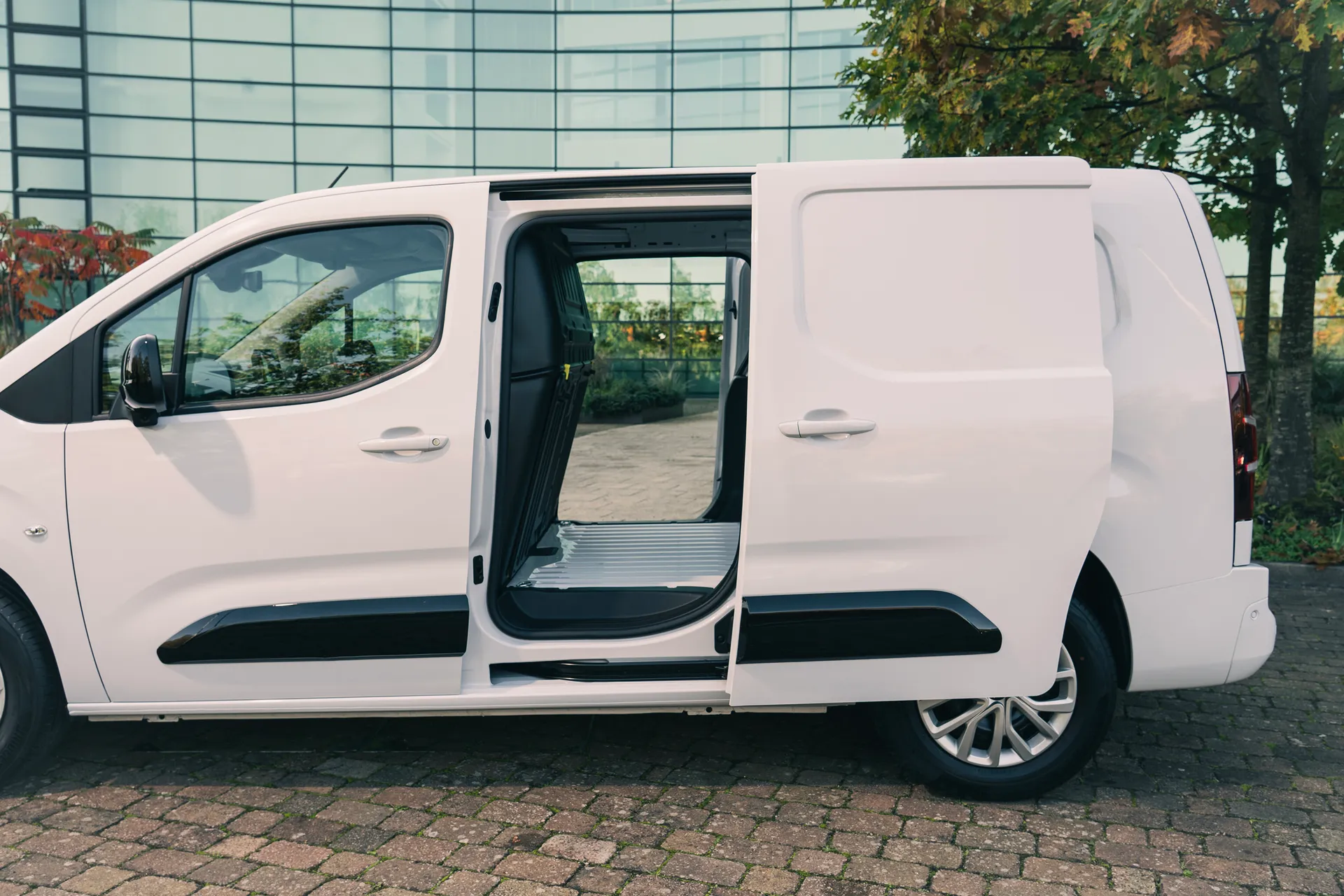
Predictably, the e-Doblo is a bit costlier to buy, with (ex-VAT) prices starting at around £29,000. The upgrades to the L2 body style and Primo trim cost about the same as before. However, you can bring that price down by up to £2,500 if you qualify for the Plug-in Van Grant (PiVG) offered by the Office of Zero-Emission Vehicles (OZEV).
If you’re looking to buy used, some decent discounts can be had in the heycar listings. You can get yourself a year-old (pre-2024 facelift) e-Doblo, with between 3,000- and 6,000 miles on the clock (so virtually nothing, basically) for around the £20,000 mark.
Trim levels and standard equipment
Two trim levels are available in the Doblo, the basic version, known simply as Doblo, and the higher-end Primo version.
Stick with the base-level Doblo, and equipment is rather sparse, with the standard roster including a manual parking brake (although all electric Doblos have an electric parking brake), manual air conditioning, electrically adjusting and heated door mirrors, electric windows, remote locking, cruise control, rear parking sensors, and automatic headlights. The vehicle also looks pretty basic, with door handles and bumpers in black plastic, and steel wheels with half hubcaps.
The Primo looks a bit smarter, with full wheel trims and body-coloured bumpers and door handles, not to mention LED headlamps and front fog lamps. On top of that, you get the extra front seat, the upgraded infotainment, an electric parking brake, rain-sensing wipers, a digital rearview mirror, rear- and side view cameras, front and rear parking sensors, power-folding mirrors, and an alarm.
Ask the heycar experts: common questions
Is the Fiat Doblo a car or a van?
Is the Fiat Doblo any good?
What’s the difference between the Fiat Doblo and the Citroen Berlingo, Peugeot Partner and Vauxhall Combo?
Get our latest advice, news and offers
Keep me updated by email with the latest advice, news and offers from heycar.
By submitting you agree to our privacy policy




